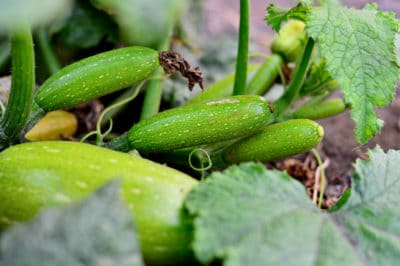Appearance of Blossom End Rot
A zucchini affected by blossom end rot has a discolored, sunken spot at one end. The spot starts out brown and darkens to black. The affected area may grow larger, sometimes becoming moldy.
Blossom end rot occurs only on the ends of the zucchini. If rot occurs on the entire fruit, it is usually caused by inadequate pollination not related to blossom end rot.
Cause of Blossom End Rot
Calcium deficiency in zucchini plants is sometimes more of a calcium uptake problem than a deficiency. The soil a zucchini plant is growing in may have sufficient calcium but moving the calcium into the fruit may be hindered. A zucchini plant’s roots must be able to transport water containing calcium to the fruit to prevent blossom end rot.
Inconsistent water supply to a zucchini plant may hinder the proper calcium uptake. Too little or too much water will interfere with proper fruit production. Calcium can also be tied up by another mineral or improper soil pH levels.
Importance of Calcium
A continuous supply of calcium is needed as the zucchini plant grows. The development of the fruit and its taste are dependent on this mineral. Calcium is vital to the health of the plant and its fruit in these ways:
- It aids in healthy cell wall growth.
- It regulates many cell processes.
- It makes plants more insect resistant.
Preventing Blossom End Rot
Amending the soil with calcium is sometimes all that is needed to prevent blossom end rot. The amount of calcium in the soil should be measured with soil testing kits before adding calcium. If the amount of calcium is low, an organic preparation of calcium chloride can be mixed into the soil.
The soil’s condition plays an important role in preventing blossom end rot. Grow zucchini in well-drained soil with a pH that is not too low or high. Do not use ammonia fertilizers that add salts to the soil: fresh manure can do the same damage. A fertilizer containing calcium and other micronutrients should be used in plants grown in containers.
Zucchini plants with the proper soil moisture have a greater chance of escaping blossom end rot. Too much or too little water will inhibit calcium uptake. Mulching plants aids with maintaining the proper moisture levels in the soil.
